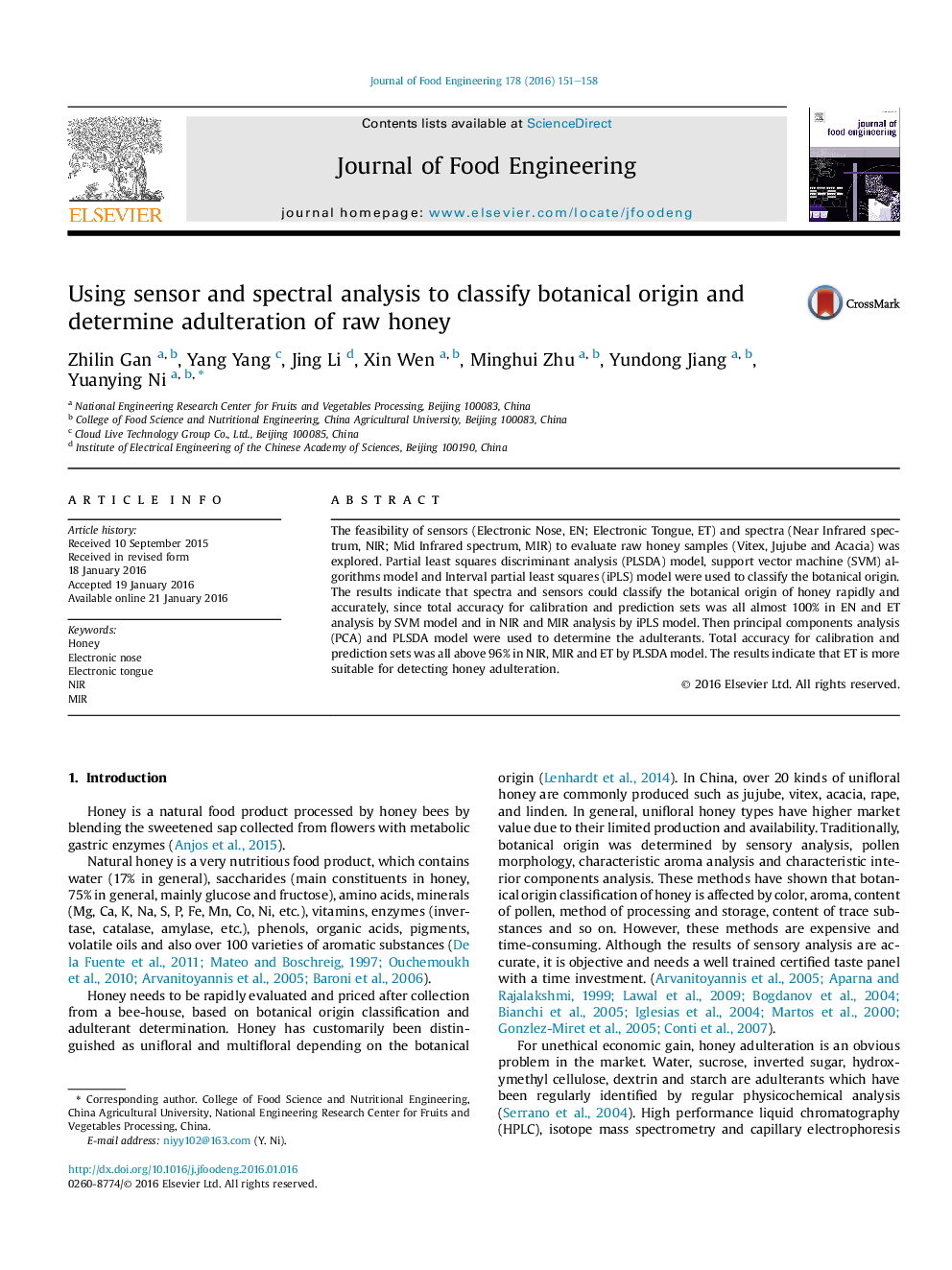| Article ID | Journal | Published Year | Pages | File Type |
|---|---|---|---|---|
| 222692 | Journal of Food Engineering | 2016 | 8 Pages |
•Evaluate the quality of raw honey by using sensors and spectra.•Classifying botanical origin and determining adulteration of raw honey based on several excellent prediction models.•Spectra will probably be more frequently applied in botanical origin classification of honey.•Electronic Tongue is considered as a more effective tool to determine honey adulterants.
The feasibility of sensors (Electronic Nose, EN; Electronic Tongue, ET) and spectra (Near Infrared spectrum, NIR; Mid Infrared spectrum, MIR) to evaluate raw honey samples (Vitex, Jujube and Acacia) was explored. Partial least squares discriminant analysis (PLSDA) model, support vector machine (SVM) algorithms model and Interval partial least squares (iPLS) model were used to classify the botanical origin. The results indicate that spectra and sensors could classify the botanical origin of honey rapidly and accurately, since total accuracy for calibration and prediction sets was all almost 100% in EN and ET analysis by SVM model and in NIR and MIR analysis by iPLS model. Then principal components analysis (PCA) and PLSDA model were used to determine the adulterants. Total accuracy for calibration and prediction sets was all above 96% in NIR, MIR and ET by PLSDA model. The results indicate that ET is more suitable for detecting honey adulteration.
